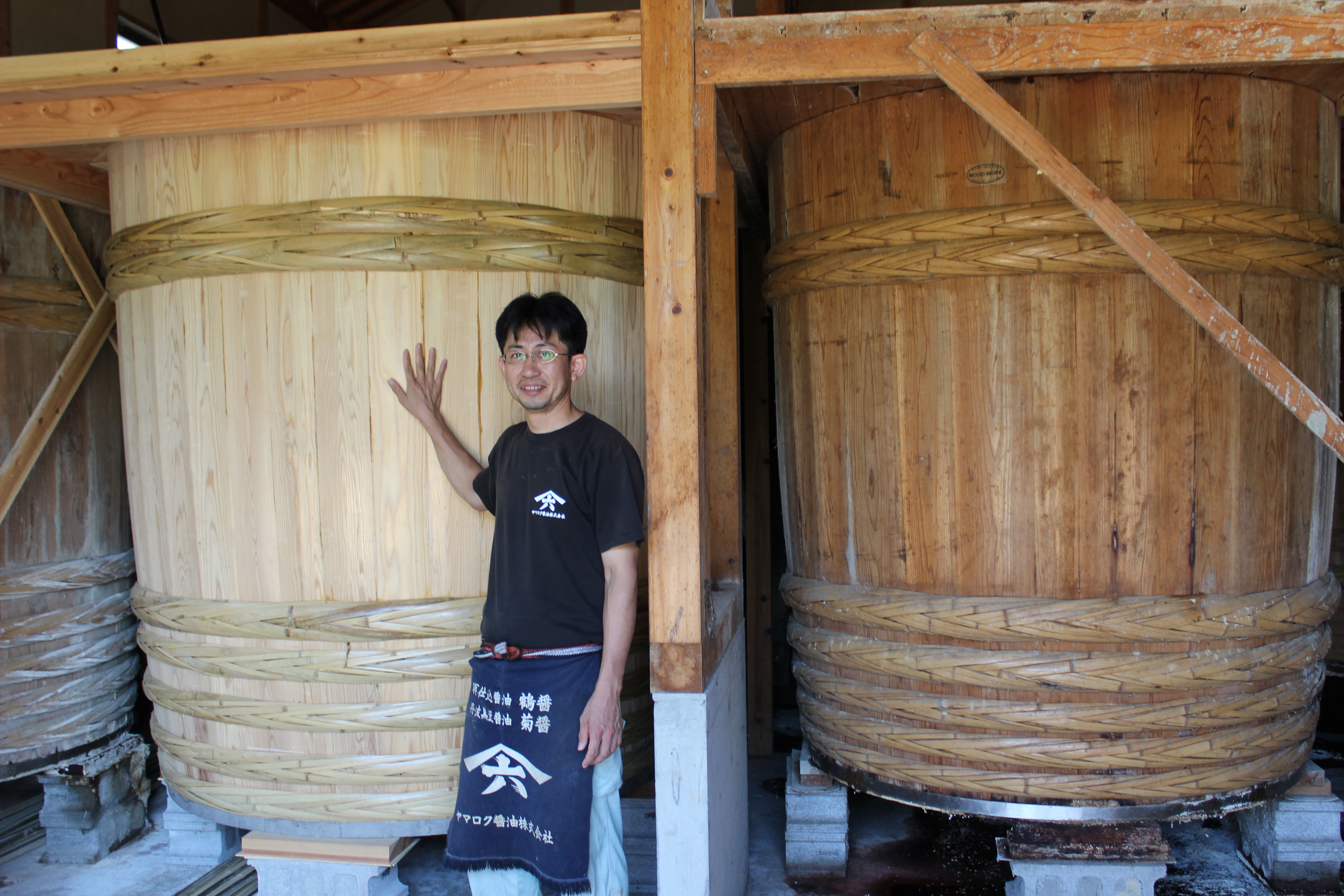Shodoshima, the largest island in the Seto Inland Sea, is not only covered in thousands of olive trees, it also holds half of Japan's remaining wooden soy sauce barrels. Though the island has produced olive oil for about 115 years, soy sauce has been made here for centuries — and has weathered many changes.
After World War II, soy sauce makers across Japan were encouraged to modernize their 1,000-year-old tradition by fermenting in stainless steel tanks rather than kioke (wooden barrels). But Shodoshima's residents — like many islanders — don't always do what they're told by mainlanders. They decided not to use stainless steel, and today there are still 20 soy sauce makers on Shodoshima who ferment the old-fashioned way. Yamaroku Shoyu is one of them.
"In the hot and muggy summer, the shōyu moromi (soy sauce mash) becomes active, making gurgling sounds as the fermentation accelerates," says Yasuo Yamamoto, the fifth generation head of Yamaroku. "When I walk the planks between the wooden soy sauce barrels, the moromi in each barrel becomes noticeably more active, as if it is talking to me, telling me it is happy to be in my presence. We have a mutual love for each other."

















With your current subscription plan you can comment on stories. However, before writing your first comment, please create a display name in the Profile section of your subscriber account page.